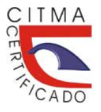Diagnosis of the stabilization pond and use of wastewater for irrigation
DOI:
https://doi.org/10.5281/zenodo.8371570Keywords:
Efficiency, Reuse, Stabilization ponds, WastewaterAbstract
The present work was carried out in a facultative stabilization pond with the objective of developing a preliminary diagnosis of the operation for the use of residual water in agricultural irrigation. It was found that the lagoon operates with an efficiency of 45 %, with dead zones at the entrance and an incorrect distribution of the influent. In addition, the maintenance of the lagoon is deficient, although it was observed that it was free of vegetation and weeds. The physical, chemical and biological analysis of the treated water showed that the light penetration was 0.20 m, and the values of fecal coliforms in the influent and effluent exceeded the limits recommended by the World Health Organization for irrigation. of raw food crops. However, it was determined that the effluent can be used for irrigation of cooked food crops, based on the guidelines used in some countries such as Chile, Peru and Bolivia. This indicates a potential for the reuse of wastewater in agriculture. In conclusion, it is necessary to improve the performance of the lagoon and establish plans for maintenance and sludge removal. In addition, more information is needed on the quality of wastewater treated for reuse in agriculture, as well as technical information on wastewater reuse.
Downloads
References
BAIRD, R., EATON, A. y RICE, E. (2017). Standard Methods for the examination of Water and Waste Water. American Public Health Association (APHA), American Water Works Association (AWWA), Water Environment Federation (WEF). Disponible: https://scholar.google.es/scholar?cluster=10785928223407825158&hl=es&as_sdt=2005&sciodt=0,5. Visitado: 15 de junio de 2023.
GAMBOA, R., CIFUENTES, G. y ROCHA, Z. (2016). Indicadores bacterianos de contaminación fecal en el agua del embalse La Copa, municipio de Toca, Boyacá/Colombia. Revista I+3 Investigación Innovación Ingeniería, Vol. 3, No.1, p. 10-23.
GHERNAOUT, D. (2017). Water Reuse (WR): The Ultimate and Vital solution for Water Supply Issues. International Journal of Sustainable Development Research, Vol. 3, No.4, p. 36-46.
GONZÁLEZ, B. G. (2018). Agua y ciudad: análisis y perspectivas del consumo de agua en el municipio de Guatemala. Revista Análisis de la Realidad Nacional, Vol. 3, No.24, pp. 179-199.
HUMANANTE, J. J. …[et al.] (2022). Eficiencia de remoción e impacto del sistema de tratamiento de aguas residuales del sector urbano y rural de la Provincia de Santa Elena. Manglar, Vol. 19, No. 2, pp. 177-187.
LARIOS, F., GONZALEZ, C. y MORALES, Y. (2015). Las aguas residuales y sus consecuencias en el Perú. Saber y Hacer, Vol. 2, No. 2, pp. 9-25.
MOLINOS, M. …[et al.] (2016). Ecoefficiency assessment of wastewater treatment plants using a weighted Russell directional distance model. Journal of Cleaner Production, Vol. 137, pp. 1066-1075.
MONTERO, F.S. … [et al.] (2020). Evaluación del impacto ambiental de la construcción de una planta de tratamiento de aguas residuales. Caso río PindChico, Puyo, Pastaza, Ecuador. Ciencia, Ambiente y Clima, Vol. 3, No.1, pp. 23-39.
PULIDO, M. (2017). Riego con aguas residuales para depuración de contaminantes. H2O Gestión del agua, Vol. 14, pp. 12-17.
SALAS, R. … [et al.] (2020). Reutilización de agua: estado actual y perspectivas. Presupuesto y Gasto Público, Vol. 101, No.4, pp. 187-204.
SÁNCHEZ, J. (2017). Saneamiento descentralizado y reutilización sustentable de las aguas residuales municipales en México. Sociedad y Ambiente, Vol. 5, No.14, pp. 119-143.
SÁNCHEZ, R. y GÓMEZ, C. (2021). Acercamiento a los procesos de modelación de la calidad del agua en una subcuenca. Caso del río Virilla, Costa Rica. Revista Uniciencia, Vol. 35, No.1, pp. 71-89.
VELIZ, E. … [et al.] (2009). Reúso de aguas residuales domésticas para riego agrícola. Valoración crítica. Revista CENIC. Ciencias Biológicas, Vol. 40, No.1, p. 35-44.
ZAMBRANO, J. D. … [et al.] (2022). Contaminantes biológicos presentes en fuentes de agua del centro-sur de la provincia de Manabí, Ecuador. SIEMBRA, Vol. 9, No.2, p.1-15.
Downloads
Published
Versions
- 2024-02-07 (2)
- 2023-09-26 (1)
How to Cite
Issue
Section
License
Copyright (c) 2023 Universidad & ciencia

This work is licensed under a Creative Commons Attribution-NonCommercial-ShareAlike 4.0 International License.





















